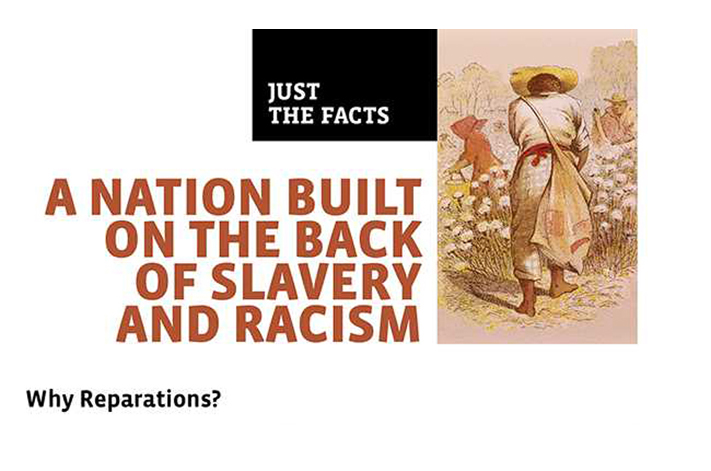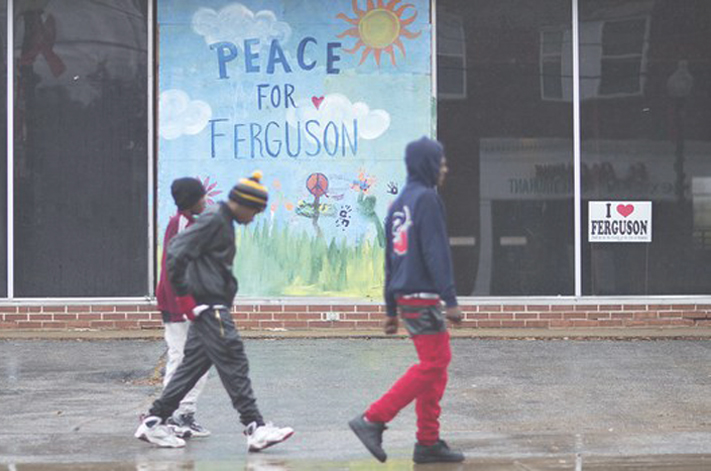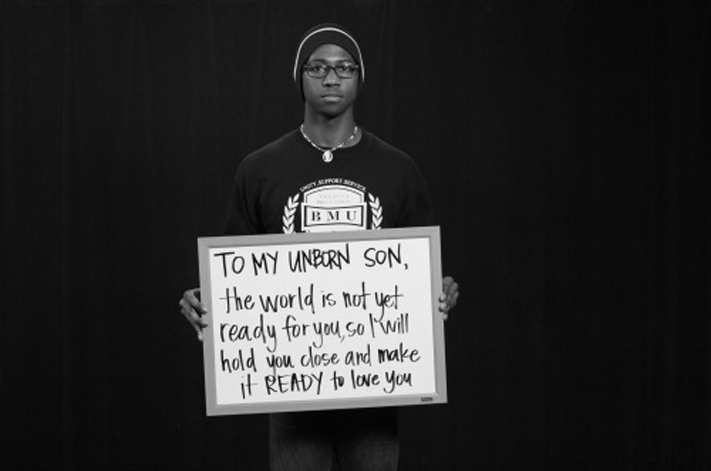Project Description
By Researchers Matteo Forgiarini*, Marcello Gallucci* and Angelo Maravita| Department of Psychology, University of Milano-Bicocca, Milan, Italy | Originally Published at Frontiers In Psychology 23 May 2011 | To Review the Full Report Download Racism And The Empathy For Pain On Our Skin Empathy is a critical function regulating human social life. In particular, empathy for pain is a source of deep emotional feelings and a strong trigger of pro-social behavior. We investigated the existence of a racial bias in the emotional reaction to other people’s pain and its link with implicit racist biases. Measuring participants’ physiological arousal, we found that Caucasian observers reacted to pain suffered by African people significantly less than to pain of Caucasian people. The reduced reaction to the pain of African individuals was also correlated with the observers’ individual implicit race bias. The role of others’ race in moderating empathic reactions is a crucial clue for understanding to what extent social interactions, and possibly integration, may be influenced by deeply rooted automatic and uncontrollable responses. Introduction Empathic reactions to pain involve different layers of cognitive processing, with a predominant role played by automatic and implicit processes. Recent neurophysiological findings (Singer et al., 2004) have documented specific neuropsychological activations of the affective but not sensory components of the brain (the pain matrix in particular), leading to fast and automatic responses to the pain of others. Similarly, the vision of a needle penetrating the hand reduces the muscular motor response in the observer compatible with the locus of injection in the target person (Avenanti et al., 2005). Immediate empathic reactions, however, are deeply affected by social cues and individual differences. We now know that functional activity related to empathy reactions to others’ feelings is affected by similarity between the witness and the person in pain (Krebs, 1975; Preston and de Waal, 2001; Lamm et al., 2010), by previous experience in the same situation (Cheng et al., 2007), by observer’s personality (Avenanti et al., 2009), by social relationship with the target (Singer et al., 2006), by familiarity for the target (Cialdini et al., 1997), gender (Eisenberg and Carlo, 1995; Baron-Cohen and Wheelwright, 2004), and age (Eisenberg and Morris, 2001). Most relevant for the present work, initial findings seem to suggest that empathy for others pain can be modulated by ingroup/outgroup social categorization based on race differences between the target and the onlooker (Cosmides et al., 2003; Xu et al., 2009; Avenanti et al., 2010). If immediate empathic reactions differ depending on the race of the target person, this modulation may be rooted in personal characteristics of the person experiencing empathy, allowing for individual differences in the strength of the link between race and empathy. A weaker reaction to pain of other race members may be a consequence of personal prejudices and, more generally, racist attitudes toward the outgroup member. It is unlikely, however, that immediate physiological reactions are modulated by explicit and elaborated cognitive processes. We reckon that the possible link between racist attitudes and weaker empathy reactions for others’ pain should operate at an implicit level, where prejudices and racism manifest themselves through fast and unconscious associations between negative evaluations and the target race (Greenwald et al., 1998). Along this line of reasoning, a recent independent TMS study (Avenanti et al., 2010) using a Blacks/Whites measure of implicit racist attitude (Greenwald et al., 1998), showed that despite the lack of explicit racial bias in the sample, participants with higher implicit ingroup preference presented greater corticospinal reactivity to ingroup models over outgroup models’ pain. The present research is aimed at providing experimental evidence that automatic, physiological reactions to other people’s pain strongly depends on the race of the person in pain, such that pain received by members of other racial groups elicits a much weaker reaction compared with the pain suffered by members of the same group. By presenting participants with a series of video clips, in two experiments we tested whether the reaction to pain of Caucasian (Italian) observers was influenced by the race (Caucasian, Asian, or African) of the person in pain. In the second study we replicate this finding and show that the moderation of empathy is correlated with the individual implicit racial biases. []. …Thus, previous research and our findings suggest that relevant group membership might play a significant role in empathetic induction. But how can people rate differences of race? And, what does really means being members of two different races? Since it is very difficult to directly measure the degree of genetic similarity with others, Krebs (1991) has suggested that one relies on discernible cues to make such judgments. Clearly, racial indicators (e.g., skin color, hair texture) would seem to qualify as powerful cues of kinship and genetic similarity. Furthermore recent findings showed that racial biases affect clinical pain management: Pletcher et al. (2008) provided evidence that physicians withhold opioid treatment from Hispanic, Black, and Asian patients compared to White patients, despite similar pain severity. The authors also noted this therapeutic disparity cannot be attributed to patient histories of alcohol and drug abuse as disproportionate treatment was most apparent in patients under the age of 12. Moreover, our data support the idea that racial groups different from the perceiver could elicit a weaker sense of familiarity than a more similar conspecific. Dehumanization Theory (Fiske et al., 2002) posits that some specific social groups are perceived as less human as they activate non-exclusively social emotions. The so called Stereotyped Content Model predicts that perceived outgroups’ warmth and competence affect what emotions outgroups elicit in perceivers. Our data are consistent with this model and findings we reported seem to place race beside warmth and competence as a predictor of shared emotions. According to Singer’s theory phenotypically distant outgroups may even elicit different patterns of brain activation, with particular regard to the medial PFC (Harris and Fiske, 2006), a region of cortex implicated in social cognition. This region responds to faces of people belonging to all social groups except extreme outgroups who activate, instead, a pattern consistent with disgust. Different degrees of dehumanization may therefore account for our findings that Caucasians could perceive Asians and Africans on different levels of humanization. Our findings indicate that even if we are not aware, our body and our mind use internalized knowledge to address reactions and activities they engage to deal with social and physical world. Future research may strengthen the link between Dehumanization Theoryand differential empathic reactions to pain. Clearly, relationship between race and empathy has many significant implications for real-world issues. Would racial differences decrease the probability that a Black teacher could empathize with a White student? Would racial similarity increase the probability that a White supervisor could empathize with a White subordinate? How a manager choose the person who has to be fired between a Black and a White worker? Although the teacher, the supervisor and the manager might make an effort to empathize, they are likely to be biased and experience less empathy for Blacks involved in their choices. Our findings suggest that the attitude toward other races may involve not only the overt self-report of the observer concerning attitudes about race but also their deep automatic and physiological reactions. These differential reactions may be elicited even at a very basic level, such as the reaction to physical pain of others. Such a fundamental racial differentiation, in turn, may bias complex activities and judgments over and beyond human consciousness. A precise assessment of other people’s pain, in fact, is a necessary skill in many human activities, from medical decisions, rescue operations, police intervention, policy making and, in extreme circumstances, use of physical force and punishment. When all these activities involve people perceived as belonging to different races, a racial bias may hinder pain assessment with detrimental effects on individuals, groups, and their peaceful relationships.[]
Conflict of Interest Statement Acknowledgments
Empathy is the ability to understand and vicariously share the feelings and thoughts of other people (De Vignemont and Singer, 2006). Empathic feelings are fundamental for humans in social and interpersonal life because they enable human beings to tune their mental states to their social environment as well as to understand others’ intentions, actions, and behaviors. One of the main sources of empathic feelings is the pain experienced by other human beings, and empathy for others’ pain, in turn, regulates behavior among individuals and social groups. Although pain has been considered an intimate and private feeling, experimental data indicate that when people witness or imagine the pain of another person, they map the others’ pain onto their brain using the same network activated during firsthand experience of pain, as if they were vicariously experiencing the observed pain (Hutchison et al., 1999; Carr et al., 2003; Wicker et al., 2003; Morrison et al., 2004; Singer et al., 2004; Bufalari et al., 2007; Lamm et al., 2007; Cheng et al., 2008). Furthermore feeling other people’s suffering triggers pro-social behavior (Batson et al., 2002), promotes helping and encourages cooperation (Batson et al., 1997a). Conversely, lack of empathy for the pain of other human beings may lead to violence, abuse, and deterioration of interpersonal and intergroup relationships (Batson et al., 2002).
The authors declare that the research was conducted in the absence of any commercial or financial relationships that could be construed as a potential conflict of interest.
This work was supported by funding from the University of Milano-Bicocca (FAR) to Marcello Gallucci and Angelo Maravita. Preliminary data were presented to the General Meeting of the European Association of Experimental Social Psychology, 10–14 June 2008, Opatija, Croatia.











